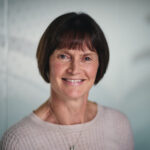There are so many personal training business software options around that we couldn’t possibly list them all here. So, to give you a guide on the best ones to explore for your business, we’ve picked out ten of our favourites, covering a broad range of different training types and business models:
PT Distinction
PT Distinction is one of the most well-known personal training solutions around, and with good reasons. It gives PT business owners an all-in-one experience, whether they need to manage a few clients or several hundreds. As well as offering website integration, bespoke online coaching, nutrition support, client technique analysis and the ability to create fitness challenges, you can apply your corporate branding to the app to align it with your overall look and feel.
Booksteam
Keeping track of who has booked you, when and where is often a task that many PTs struggle with. Booksteam is a leading solution for solving that problem, as an online scheduling service that can ease and automate appointments and bookings, both for individuals and groups. As well as being able to manage your schedule in one place, clients can make bookings through the platforms themselves for a more seamless experience.
Hexfit
Hexfit is a good choice for PT businesses that are starting small and intend to grow and scale up in the future. That’s because the software is available across a variety of tiered price points that differentiate access to services depending on budget. But it’s also the home of some really helpful innovations, such as aggregating smartwatch data, the ability to plan with the help of artificial intelligence, and a database of thousands of exercises to make use of.
Dietmaster
Many solutions in this area are focused more on fitness and athletic achievement, and less on the very different space of diet and nutrition. For this specialism, Dietmaster stands out as a leading software option. It makes it easy to create and manage personalised diet plans for your customers, analyse their food journals to track their progress, and even develop and distribute shopping lists to help keep them on the right track.
Virtuagym
Virtuagym is a stand-out choice if you want to add virtual and home-based training services to your portfolio. Your clients can access the platform 24/7 and explore a range of classes and workouts online, complementing the training that you deliver in-person. You’ll also be able to keep in touch with your clients through private messaging and push notifications, and take payments and bookings within the platform.
ClubWorx
If it’s help with business administration that you need the most, then it’s definitely worth taking a look at ClubWorx. Designed principally for those running a studio, it encompasses attendance monitoring, marketing communications, payments, invoicing, enrolment and other vital paperwork duties. This makes it quicker and easier to handle all the back-office work, so you can spend more time on growing your business.
10to8
10to8 is ideal for larger personal training businesses who want to take a more corporate, professional approach. It’s full of integration opportunities with calendar solutions like Google Calendar, iCal and Outlook, finance software like Quickbooks, communications tools such as Zoom and Microsoft Teams, and even sales management software like Salesforce. If you want to become a major personal training player, 10to8 can help you bring everything together in one place.
Exercise.com
Exercise.com is a recognised player in the PT space, and its business management software takes into account virtually all of the daily activities and admin jobs that a PT business might encounter. This includes (but is by no means limited to) giving feedback to assessment, dovetailing training with an eCommerce store, advanced marketing and schedule management, and reporting on progress and performance.
TrackActive
Some PT businesses like to specialise in helping medical patients improve their fitness, or help with their rehabilitation. TrackActive is the perfect platform for this specialism, coming with an extensive database of professionally-guided exercises based on proven medical evidence. With these, you can go on to develop customised workout plans that give clients the best chance of achieving their goals.
Training Tilt
If you’re training your clients specifically for endurance, then keeping track of their key metrics is vital. Training Tilt is one of the leading choices for taking these measurements, including speed, pace, elevation, heart rate and much more for runners and cyclists alike. The app can be connected with leading GPS tracking apps like Strava and Garmin, enabling that vital link between client activity and their performance data.

















